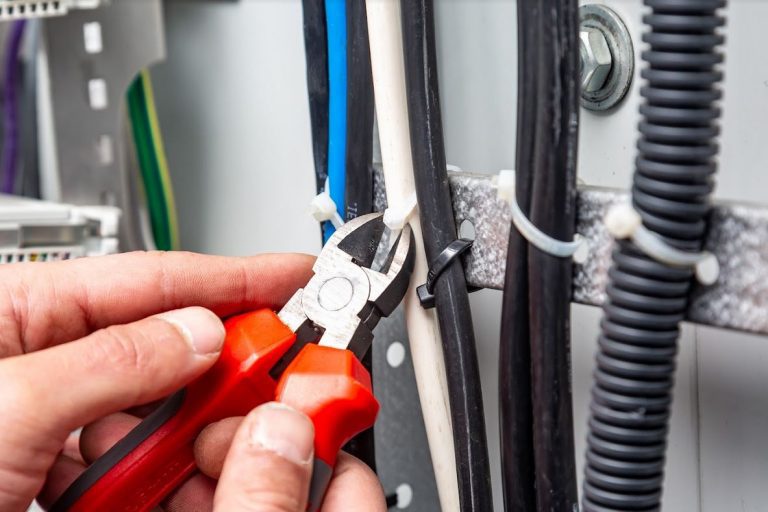Only the best and high-quality cutting pliers are necessary for activities involving wires, cables, ropes, and many more. Because of this, many workers have their own set of cutting pliers handy. Apart from cutting, workers generally use pliers in pulling, bending, and twisting materials too. Without them, different heavy-duty materials may be more challenging to work on. If you’re planning to buy your first-ever pair of cutting pliers, you may have limited knowledge of what qualities to look for. In this article, you may gain insights that could help you choose the type that’d suit your needs. Continue reading to learn more. 1. Best For Hard Wire There are a lot of cutting pliers in the market to choose from. They come in different forms and sizes. However, there are cutting pliers that cut hard wires or thick cables better than the others. These tools are what you may need to look for. You may check how wide their jaws are. You may look into their sharp blades too and determine whether they could slice through multi-layered wires. If you do a lot of cutting day to day, then choosing the end cutting pliers by Maun is best, as they offer a compound lever action to save your hand strength. Or you could browse similar cutting tools that would address your needs. 2. Cutting Power Efficiency Aside from the pliers’ ability to cut through hard and thick lines or wires, you may look if they’re capable of slicing through an object efficiently as well. Aside from the blades, you may consider the metal or steel quality. Also, it’s advised to check the pliers’ grips span and select the type with 6-9cm to avoid cutting accidents. In addition, you may look into the pivot point. This part should easily move sideways when gripped or un-gripped for better locking. This way, you’d be sure that you’ll cut wires evenly and well. In some cases, you may use your pliers in cutting metal strips or hard components that may be challenging to rip off. If your chosen tool can cut through these materials, they’re likely to slice similar objects. 3. Ease Of Use And Maintenance Although maintenance is your job to ensure your tools’ excellent performance and extended lifespan, it’d be better if the pliers were easy to use and maintain. If the pliers need simple gripping and slight pushes, you’re less likely to have troubles with their use. In addition, you could avoid untoward cutting that may come along with its use. In maintenance, you may prefer pliers that are easy to clean with just by merely wiping and oiling them. In addition, you may check if the pliers have an excellent return spring as it’s one of the parts that usually dislodge. If you want to properly maintain your cutting pliers, you could keep them in a toolbox. Apart from it, you may try the following steps: Dry your pliers thoroughly when they get wet, especially when they’re submerged underwater. Wipe the dirt before and after using the pliers. Coat the cutting tool in a layer of oil. Lubricate the pivot joint regularly. If the blade and jaw points start to be blunt, hone them with a reliable sharpening tool. Store them in a clean and spacious toolbox. Refrain from putting it in storage with dirty or rusty tools. Run maintenance checkups every after repair in between home improvement projects. 4. Durability And Longevity You may look into the durability of the tool through its hardness level. In many cutting pliers, the standard is pegged at HRC 64. The blade’s sharpness also has something to do with the general durability and pivot joint strength. It’s believed that the sharper the blades are, the more durable the tool is as it won’t need extra force when cutting. In addition, you may check on the general performance of the pliers when repetitively used. You may choose the type that requires minimal effort yet provides better performance. Lastly, look into the tool’s body if it’s prone to cracking or chipping and other damages. 5. Feed Generally, feed refers to how deep the pliers could bite. For this feature, you may look into the maximum gap created between the two jaws when opened. Typically, the wider the gap is, the thicker the size of the wire to be bitten. However, it may affect the jaw strength of the pliers. On the contrary, smaller gaps could mean a stronger bite. 6. Cost-Effectiveness Cutting pliers come at different prices. If you’re considering the latter, you may compare the prices of the various cutting tools you like. After viewing the points mentioned above, you may use the price as the deciding factor. Having that, you may select the cutting pliers that could cut thick wires and cables but cost lesser than most tools. Dos And Don’ts In Using Cutting Pliers After considering the points mentioned above, you may want to know how to keep your cutting tool efficient and durable. For that purpose, you may try to follow these reminders: Avoid using your pliers in cutting bolts and nuts as they could get blunt and chipped. Assess the thickness and hardness of the wire you’re planning to cut before you slice them. Choose appropriate pliers for thick cables. Refrain from exposing your tool to extreme temperatures. Avoid submerging your pliers underwater. Don’t use pliers with loose joints and worn-out blades. Use pliers in a forward or pulling manner instead of pushing way to prevent accident off slips. Final Thoughts Tools like cutting pliers are necessary to get heavy-duty tasks done properly. In many cases, they’re used in quick repairs and home improvement projects. Because of this, it’s vital to use high-quality tools to avoid accidents and ensure excellent results. If you’re planning to buy cutting pliers, you may want to use the insights you’ve got from this blog. Consider the tips and features in choosing which pliers could help you in your tasks most efficiently and







